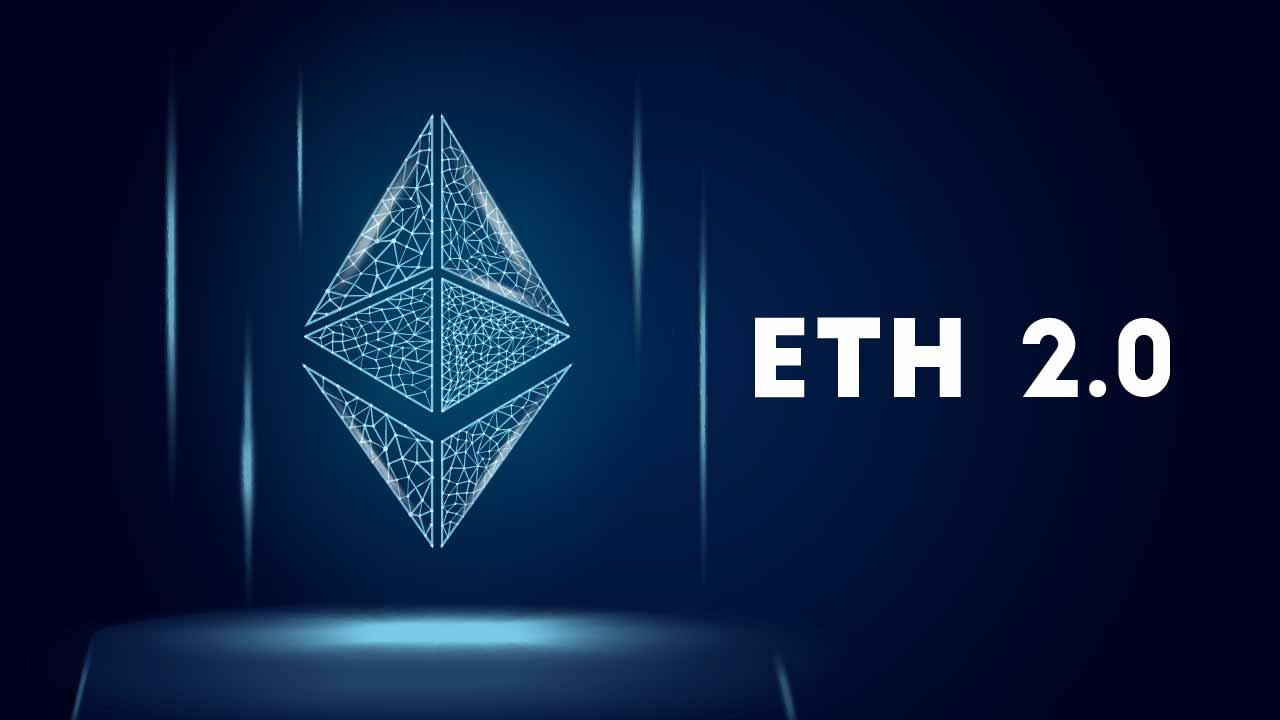What is Ethereum 2.0?
ETH 2.0 is aimed at enabling the network to process more transactions while increasing security and enhancing decentralization
By Staff
The first phase of Ethereum 2.0 is now live. It’s been a long time coming, but it’s finally here. The multi-phased upgrade was released on December 1st 2020 to improve the Ethereum network’s scalability and security by making a number of infrastructure modifications, the most notable of which is the conversion from a Proof of Work (PoW) consensus method to a Proof of Stake (PoS) model.
The Ethereum blockchain has been upgraded to Ethereum 2.0, often known as Eth2 or “Serenity.” ETH 2.0 is the result of long-term planning in the Ethereum roadmap, aimed at enabling the network to process more transactions while increasing security and enhancing decentralization. This is a huge undertaking requiring great innovation and significant changes to create novel solutions that offer more benefits to the users.
Ethereum 2.0 was released in stages, with the first, known as the Beacon Chain, becoming online in 2020. The Beacon Chain adds native staking to the Ethereum blockchain, which is an important part of the network’s transition to a PoS consensus process. It’s a distinct blockchain from the Ethereum mainnet, as the name implies. This is designed to minimize the disruption of normal chain activities during these early stages of the transition.
The Merge is the second phase. It will merge the Beacon Chain with the Ethereum mainnet and is planned for the first or second quarter of this year. It will unlock the other functionalities of the Ethereum blockchain. It will enable transfers and withdrawals, cross-shard transfers, and the ability to build applications. The PoW mechanism will be retired in Phase 2 with Ethereum 1.0 data absorbed in ETH 2.0 public mainnet.
Shard Chains, the final step, is critical in scaling the Ethereum network. Instead of settling all transactions on a single blockchain, shard chains distribute them across 64 different chains. This also means that running an Ethereum node is significantly easier in terms of hardware because there is far less data that needs to be saved on a machine.
Shard Chains are also expected this year too but the exact date is unknown.
Why is Ethereum important?
Despite the fact that the ETH 2.0 upgrade has been in the works for a long time, it could not have come at a better moment. Because of its smart contract features, Ethereum has become the most popular network for developing a wide range of dApps, from games to financial applications. The rising popularity and use of Ethereum have resulted in higher demand, which can cause the network to become overburdened. For example, the network has failed to keep up with the growing DeFi market, with transaction prices recently soaring. This has served as a timely reminder that Ethereum, in its current form, is unsustainable. ETH 2.0 will address these issues by significantly increasing network capacity, cutting transaction fees, and allowing for the development of more innovative solutions.
Following a number of postponements, the wider crypto world is looking forward to the launch of ETH 2.0. As a result, Ethereum developers are extremely cautious, and the launch has been postponed until the code has been thoroughly audited. As things stand, the Ethereum community will have to wait a long time for ETH 2.0 to be released. The wait is well worth it, given the enormity of this upgrade. Alternatively, good things come to those who wait, as the proverb says.
The security was taken into consideration when Ethereum 2.0 was developed. The majority of PoS networks have a small number of validators, resulting in a more centralized structure and lower network security. Ethereum 2.0 necessitates a minimum of 16,384 validators, making it far more decentralized and hence secure.
The Future for Ethereum 2.0
Ethereum’s Co-founder Vitalik Buterin has laid out a roadmap of how the next five to ten years could pan out for Ethereum 2.0. Over the last two years, he claims, there has been a “solid shift from ‘blue sky’ research, attempting to understand what is conceivable, to actual research and development, attempting to optimize certain primitives that we know are implementable and implementing them.”
According to Buterin, the majority of the difficulties are now “increasingly about development, and development’s piece of the pie will only continue to expand over time.” Buterin stated that before deploying shard chains, Ethereum 2.0 will need to rely on current scaling mechanisms such as ZK-rollups for at least two years.
Ethereum’s London hard fork and Ethereum Improvement Proposal 1559 (EIP-1559), which modifies how transaction fees function on the network, were released in August 2021. Users that perform a transaction on the Ethereum network pay a basic fee that is burned rather than being sent to Ethereum miners, lowering the quantity of ETH and putting deflationary pressure on the network.
The release of Ethereum 2.0 was just what the cryptocurrency needed, according to some.
“All problems will be answered once Ethereum has scalability via layer-2 tech or ETH 2.0,” mentioned Jamie Anson, CEO of Nifty Orchard and Organizer of Ethereum London. “The shooting gun will be activated.”
In other words, increased scalability leads to increased usage, which leads to increased demand. In theory, this should push the price of Ethereum to unprecedented heights.
